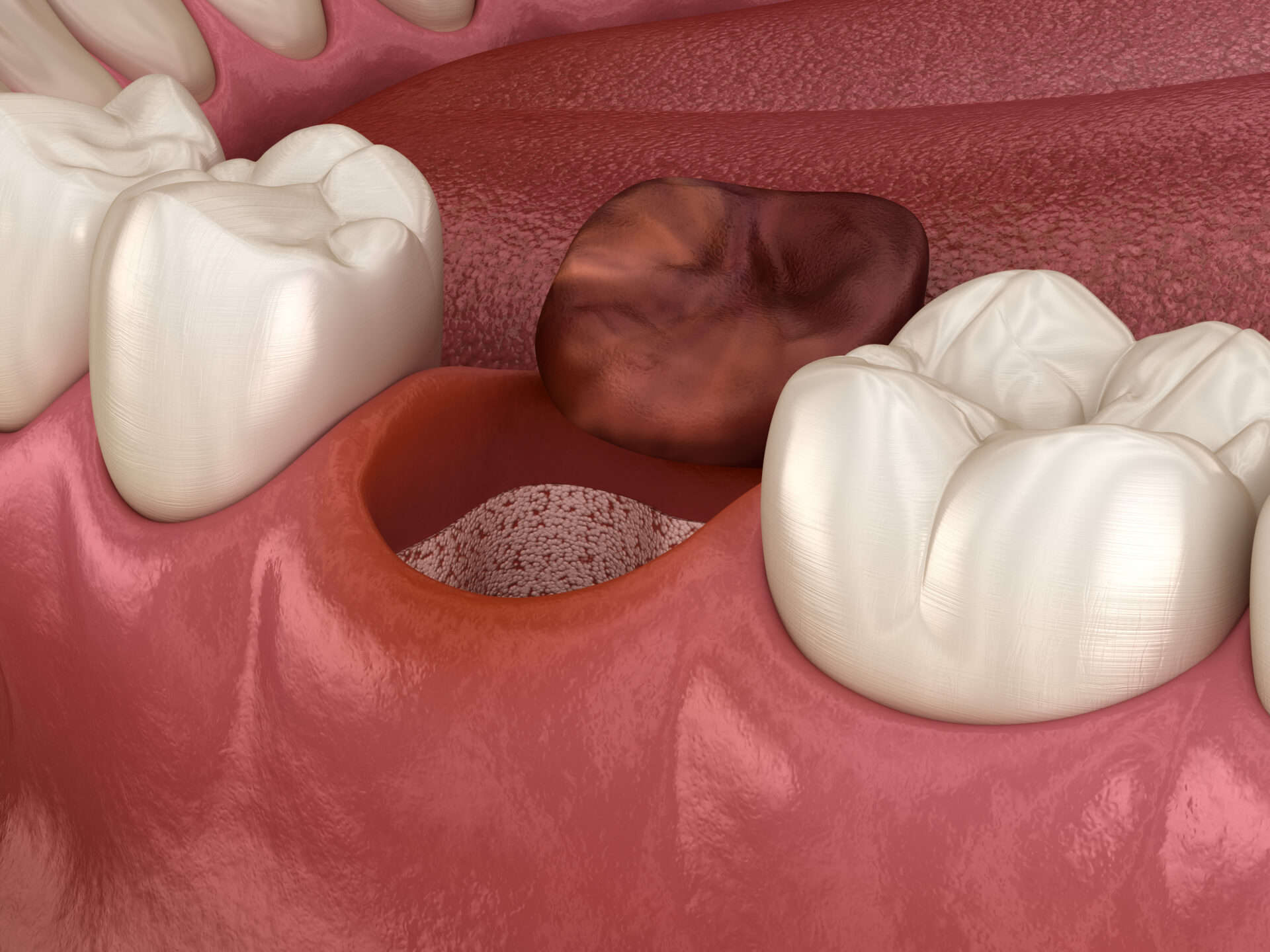In most dental patients, blood fills up the open socket in the bone left after a tooth extraction. The blood hardens or clots and protects the tooth socket while the gums grow over the top of the hole. In most cases the gums completely grow over and close the tooth extraction socket within one to two weeks. Over the next year, the blood clot is replaced by bone that fills the socket.
In a patient with a dry socket, blood does not fill the extraction socket or the blood clot is lost. The most common causes are spitting, smoking, rinsing in the first few hours, or eating hard foods that dislodge the clot. With the clot missing, there is exposed bone in the extraction socket.
This open “dry” socket causes a constant dull throbbing pain that is quite uncomfortable. The more bone that is exposed, the more symptoms a patient may have. The dry socket pain can sometimes be felt in the ear or back of the head. Unfortunately, once a dry socket has formed and becomes inflamed, healing is often slower than normal.
Until the gums have healed over the exposed socket completely, the pain will continue. This typically lasts for an additional week.
The dental name for a dry socket is “acute alveolar osteitis”, which means sudden inflammation of the bone that supports a tooth.
While dry sockets are quite painful, there is no risk of long term complications. Patients who get dry sockets will ultimately heal normally and should not be concerned about any long term problems.

